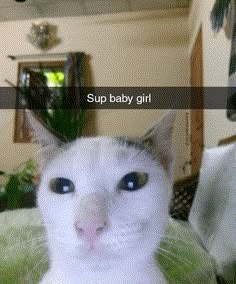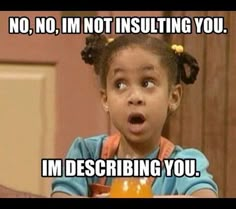Funny Memes: An Exploration of Internet Humor
Summary
This blog post explores the world of funny memes, covering their origins, mechanics, psychology, and future trends. It examines why these humorous snippets of internet culture are so popular and how they have become a dominant form of online communication.
The Enduring Appeal of Funny Memes: A Deep Dive
Memes, those ubiquitous snippets of internet culture, have become a dominant form of online communication. Among the vast landscape of memes, funny memes reign supreme, capturing attention and sparking laughter across diverse online communities. This exploration delves into the origins, mechanics, and enduring appeal of funny memes.
What Exactly Is a Funny Meme?
At its core, a meme is an idea, behavior, or style that spreads from person to person within a culture. Internet memes, specifically, are typically images, videos, or text that are humorous and widely shared online. The "funny" aspect is, of course, subjective, but successful funny memes often rely on relatable situations, clever wordplay, unexpected twists, or absurd humor. They are designed to be easily understood and shared, often with slight variations that adapt the original concept to new contexts.
The Genesis of Funny Memes: From Image Macros to Viral Sensations
The history of internet memes can be traced back to the early days of the web. One of the earliest examples often cited is the "Dancing Baby" animation from the late 1990s. However, the modern meme format truly took shape with the rise of image macros – images overlaid with text, often using the Impact font. Sites like 4chan and Something Awful played a crucial role in popularizing these early memes, establishing the foundations for the meme culture we know today. Examples include classics like "Advice Dog" and "Success Kid."
As social media platforms like Facebook, Twitter, and Reddit gained prominence, memes spread more rapidly and reached wider audiences. The evolution continued with the emergence of video memes, GIF memes, and more complex formats that incorporate elements of remix culture and participatory media.
How Funny Memes Work: Relatability, Humor, and Shareability
The effectiveness of a funny meme hinges on several key factors:
- Relatability: Many successful memes tap into common experiences, emotions, or frustrations that resonate with a large audience. This allows people to see themselves in the meme and share it with others who can relate.
- Humor: The humor can take many forms, from observational comedy to absurdist jokes. The key is to create a sense of amusement or surprise that encourages people to engage with the meme.
- Shareability: Memes are designed to be easily shared across different platforms. This means they need to be visually appealing, concise, and easily understood, even by those unfamiliar with the specific context.
- Timeliness: Many memes are tied to current events, popular culture trends, or viral videos. This timeliness can significantly boost their popularity, but it also means they may have a shorter lifespan than more evergreen memes.
Why Are Funny Memes So Popular? The Psychology Behind the Laughter
The popularity of funny memes can be attributed to several psychological factors:
- Stress Relief: Humor is a well-known stress reliever. Funny memes provide a quick and easy way to lighten the mood and escape from the pressures of daily life.
- Social Connection: Sharing memes is a way to connect with others and express a shared sense of humor. It can also be a way to signal belonging to a particular online community.
- Self-Expression: Memes can be used to express opinions, feelings, or beliefs in a humorous and relatable way. This allows people to communicate complex ideas in a concise and engaging format.
- Cognitive Reward: The act of understanding a meme and recognizing its humor triggers a release of dopamine in the brain, creating a sense of pleasure and reward.
The Target Audience: Who Enjoys Funny Memes?
While funny memes have a broad appeal, certain demographics are more likely to engage with them. Younger generations, particularly millennials and Gen Z, are often considered the primary consumers and creators of meme content. However, the reach of memes extends far beyond these age groups, encompassing people of all ages, backgrounds, and interests.
Key Features and Characteristics of Successful Funny Memes
- Simplicity: The best memes are often the simplest. They convey a clear message with minimal text and a visually striking image or video.
- Adaptability: Successful memes are often adaptable to different contexts and situations. This allows them to be remixed and reinterpreted in countless ways, extending their lifespan and reach.
- Originality: While many memes are based on existing templates or formats, the most successful ones often introduce a fresh perspective or a unique twist.
- Virality: The ultimate goal of any meme creator is to achieve virality. This means creating content that is so funny, relatable, or thought-provoking that people are compelled to share it with their friends and followers.
The Technology Behind Meme Creation and Distribution
The creation and distribution of funny memes rely on a variety of technologies:
- Image Editing Software: Tools like Adobe Photoshop, GIMP, and online meme generators are used to create image macros and other visual memes.
- Video Editing Software: Programs like Adobe Premiere Pro, Final Cut Pro, and mobile video editing apps are used to create video memes.
- Social Media Platforms: Platforms like Facebook, Twitter, Instagram, Reddit, and TikTok are the primary channels for distributing and sharing memes.
- Meme Aggregators: Websites and apps like Imgur, 9GAG, and Know Your Meme curate and showcase popular memes.
The Future of Funny Memes: Evolving Trends and Emerging Formats
The world of memes is constantly evolving, with new trends and formats emerging all the time. Some of the current trends include:
- Deep Fried Memes: These memes are heavily distorted and saturated with visual effects, creating a surreal and often humorous effect.
- Surreal Memes: These memes embrace absurdity and non-sequiturs, often defying logic and reason.
- Dank Memes: This term is used to describe memes that are intentionally low-quality, ironic, or edgy.
- AI-Generated Memes: With the rise of artificial intelligence, AI-powered tools are now being used to generate memes automatically.
As technology continues to advance and online culture continues to evolve, the future of funny memes is sure to be full of surprises. One thing is certain: memes will continue to be a powerful force in shaping online communication and culture for years to come.
In conclusion, funny memes are more than just silly pictures and videos. They are a reflection of our shared experiences, a form of social commentary, and a powerful tool for communication and connection. Their enduring appeal lies in their ability to make us laugh, to help us connect with others, and to provide a brief escape from the everyday.








